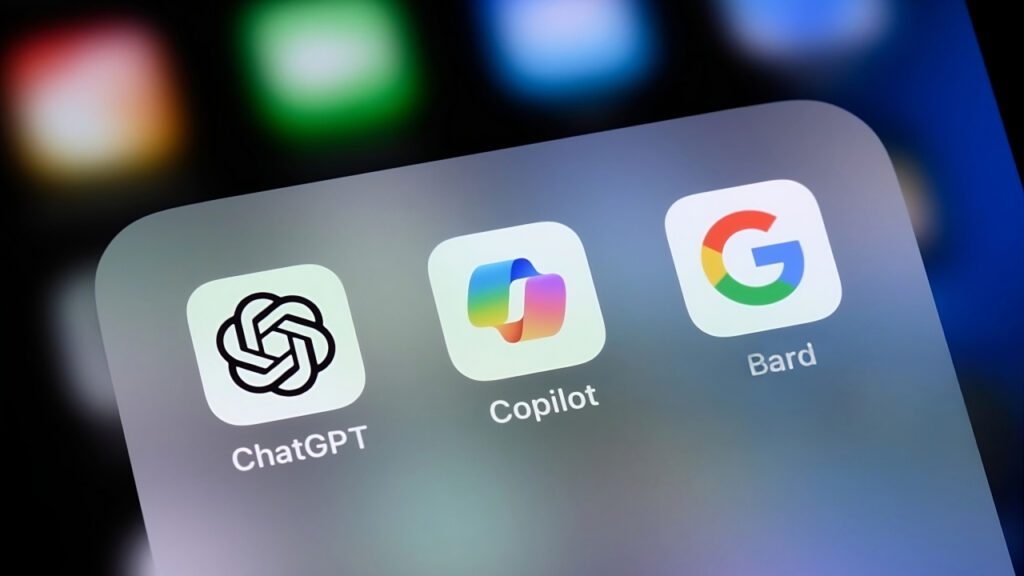
Artificial intelligence now sits inside everyday workflows. Developers write cleaner code with less effort, marketers ship content faster and support teams resolve more tickets with fewer handoffs.Two names come up in almost every conversation about coding help and general-purpose assistance. The debate of copilot vs chatgpt is not a trend.
It is a practical choice about how you work. Do you need an AI that lives in your editor and anticipates your next line, or a conversational assistant that can plan, write, explain and even code on request.
In this guide, we compare features, pricing, and real use cases. We look at Copilot alternatives, where both tools fit inside the Best AI Tools for Business, and answer two questions many teams ask today. Is Copilot better than ChatGPT and Is Copilot Worth It.
Table of Contents
ToggleWhat Copilot is
GitHub Copilot is an AI pair programmer that sits inside your IDE. It reads the file, the function, the project context, then suggests the next token, the next line or the next block. You stay in flow. It works across many languages and is especially helpful when you do similar patterns again. Think test scaffolding, data mappers, REST handlers, React props, SQL joins and more. It also explains code and can chat about your project without leaving your editor.
Where Copilot shines
- Code completion that feels instant
- Context awareness across files in your workspace
- Gentle learning helps with new syntax and idioms
Lower cognitive load in long sessions
What ChatGPT is
ChatGPT is a general-purpose AI assistant. It answers questions, drafts content, explains concepts, brainstorms structures, reviews code and writes code on demand. It is not locked to a specific tool. You talk to it, give it a goal, then refine.
Think of it as a collaborator that can switch from marketing to legal plain language, then back to Python. It is also widely embedded in products through an API, which makes it a flexible building block for internal tools.
Where ChatGPT shines
- Structured content for posts, briefs, emails and reports
- Research summaries and first pass analysis
- Code generation with explanations and refactoring ideas
- Brainstorming and naming with style control
Copilot vs ChatGPT briefly
| Feature | Copilot | ChatGPT |
| Primary focus | Code completion and editor chat | Conversational AI for many tasks |
| Best for | Developers who live in IDEs | Writers, marketers, support, developers |
| Environment | VS Code, Visual Studio, JetBrains, Neovim | Web app, mobile app, API connections |
| Coding help | Real time suggestions in editor | Strong code generation and debugging in chat |
| Content writing | Not designed for prose | Excellent for drafting and editing |
| Learning aid | Syntax patterns and idioms | Step by step teaching across subjects |
| Customization | Editor settings and policies | System prompts, plugins, API workflows |
The heart of copilot vs chatgpt is purpose. Copilot is a specialist that speeds coding inside your editor. ChatGPT is a generalist that supports many roles across a company.
Why this comparison matters
Many teams try to force one tool to do everything. That leads to frustration. If you code eight hours a day, a completion engine saves time every minute. If your week includes writing briefs, reviewing copies, replying to customers and producing slides, a conversational model earns its keep.
The right choice depends on your mix of tasks. That is why the question, Is Copilot better than ChatGPT does not have one answer. Context decides.
Features in depth
Copilot features that move the needle
- Inline completion in your current file with suggestions that match your project style
- Multi file awareness so it can reference types, tests and helpers nearby
- Editor chat that explains blocks, suggests tests and answers how to
- Language coverage from Python and JavaScript to Go, Rust, Java, C Sharp and more
- Policies and admin on business plans for guardrails and usage control
ChatGPT features that expand scope
- Conversational planning for outlines, briefs and campaigns
- Structured drafting with voice and tone control
- Reasoned explanations that teach concepts in plain language
- Code generation with comparisons, tradeoffs and comments
- Integrations and API so teams can embed it in dashboards, bots and tools
Pricing in 2025
Pricing shifts from time to time, so here is a snapshot you can rely on today.
Copilot plans
- Free plan for individuals with limited completions and chat, good for trying the flow.
- Pro plan at 10 dollars per month or 100 dollars per year for unlimited completions and chat access.
- Pro Plus at 39 dollars per month for added request capacity and access to premium models.
- Business plan at 19 dollars per user per month for admin control and policy settings.
ChatGPT plans
- Free plan with access to a base model for casual use
- ChatGPT Plus at 20 dollars per month with faster responses and advanced features.
- Team plans are commonly listed around 25 to 30 dollars per user per month with shared workspaces.
- Enterprise pricing is custom, often quoted per user with volume terms. Some guides note starting levels at or above 60 dollars per seat per month, but final quotes vary.
FACT: Copilot’s free plan now exists across supported editors with monthly limits, which lowers the barrier for students and solo developers.
Pricing table
| Plan | Copilot | ChatGPT | Good fit |
| Free | Yes, with monthly limits | Yes | Trials and light use |
| Individual | Pro at 10 dollars per month | Plus, at 20 dollars per month | Solo devs vs multi role pros |
| Team | Business at 19 dollars per user per month | Team at about 25 to 30 dollars per user per month | Small teams with shared needs |
| Enterprise | Customs with admin and policy control | Custom of security and governance | Compliance and scale |
When you compare costs, include the time saved in your editor and the time saved on writing and analysis. Price per seat is sticker, but value lives in hours returned to your week.
Value and ROI
To judge copilot vs chatgpt, count minutes saved across a normal week.
- If you spend most of your time inside an IDE, Copilot trims micro delays on every function, test and refactor.
- If your week mixes content, planning, support, analysis and some coding, ChatGPT covers more ground.
Quick ROI sketch
- Write down your average coding hours per week
- Estimate minutes saved per hour with Copilot
- Multiply by your internal hourly rate
- Compare monthly savings with the subscription
Do the same for ChatGPT with writing, research and customer replies. The right answer often becomes obvious after you run the math.
Real workflows that work today
Developer day in flow
- Morning: ChatGPT drafts a feature spec with acceptance criteria.
- Late morning: Copilot generates React components, suggests tests and fills service calls.
- Afternoon: ChatGPT reviews error messages and explains a tricky stack trace.
- End of day: Copilot completes unit tests and tidy refactors.
Marketing sprint
- Brief in ChatGPT with tone and audience.
- Outline with options A and B.
- Draft long form content, then ask for two social versions.
- Review with readability fixes and calls to action.
- Publish and log insights into the next campaign.
Support and success
- ChatGPT handles first touch answers to common questions with links to docs.
- Hand off edge cases to humans with full context.
Copilot helps engineers ship small fixes faster when repeated issues show up.
Use cases table
| Use case | Copilot | ChatGPT |
| Daily coding in IDE | Excellent | Helpful outside editor |
| Debugging and refactoring | Excellent inside editor chat | Strong with step-by-step advice |
| Blog drafts and briefs | Not the goal | Excellent for structure and style |
| Customer replies and macros | Not the goal | Excellent with tone control |
| Internal tools via API | Limited scope | Very flexible with API patterns |
PRO TIP: Treat ChatGPT as the planning room and Copilot as the workshop. Plan the cut list, then start building.
Is Copilot better than ChatGPT
Short answer. It can be. If you are a developer who codes most of the day, Copilot feels like magic because it removes friction you no longer notice. It anticipates a loop, a guard clause, a mapper.
For that person, the answer to, is Copilot Worth It is yes. For a founder, a marketer, an analyst, or a support lead, ChatGPT returns value across more tasks. It drafts, edits, explains and translates. In a head-to-head copilot vs chatgpt match, the better tool is the one that serves the higher slice of your week.
Copilot alternatives you should know
- Tabnine: Strong multi language completion with a focus on speed and privacy controls
- Replit Ghostwriter: Great for collaborative coding in the browser
- Codeium: Editor extensions with chat and autocomplete across languages
- Kite: Helpful for Python and JavaScript learning paths
- Codota: Common in Java heavy shops with deep snippet search
Use one primary coding assistant at a time to avoid noisy suggestions. Keep a second tool handy for pair checks on tricky files.
Best AI Tools for Business in 2025
When teams assemble a modern AI stack, they rarely pick a single product. The strongest setups pair a coding assistant with a conversational brain.
- GitHub Copilot for code in the editor
- ChatGPT for planning, content, support and data questions
- Salesforce Einstein for CRM predictions and lead scoring
- HubSpot AI for campaign planning and outreach
- Notion AI for notes, meeting capture and summaries
- Miro AI for boards, diagrams and quick synthesis
- Zapier AI for triggers that connect tools without code
This mix covers build, communicate, sell and support. It also spreads risk across tools, so you do not depend on one provider.
Decision framework
Quick path to a good choice
- List your top ten weekly tasks in order of time spent
- Mark tasks that happen inside an IDE vs outside an IDE
- If six or more live in the IDE, pick Copilot first
- If most live outside, pick ChatGPT first
- Add the other tool only if the first one leaves obvious gaps
Setup steps
Copilot
- Install your editor extension
- Open a repo with clear structure and tests
- Start with small files to learn suggestion quality
- Use editor chat to explain and generate tests
ChatGPT
- Create a reusable system prompt with your tone and rules
- Build a library of templates for briefs, replies and reports
- Save example inputs and outputs for consistency
- Connect the API only after you trust the patterns
Pricing and plan note you can trust
- Copilot Free exists with monthly limits across Visual Studio and other support editors.
- Copilot Pro is listed at 10 dollars per month or 100 dollars per year for individuals.
- Copilot Pro Plus is listed at 39 dollars per month for higher request caps and premium model access.
- Copilot Business is commonly listed at 19 dollars per user per month.
- ChatGPT Plus is 20 dollars per month.
- ChatGPT Team is often quoted around 25 to 30 dollars per user per month.
- ChatGPT Enterprise is quoted case by case with per user pricing and volume terms.
Final comparison table
| Factor | Copilot | ChatGPT |
| Core identity | AI pair programmer | Conversational assistant |
| Strength | Speed in editor, code patterns, tests | Drafting, explaining, multi role tasks |
| Weakness | Limited outside coding | Not embedded in IDE by default |
| Best user | Full time developer | Cross functional pro or team |
| Price focus | Lower cost for devs | Broader value for many roles |
| Verdict in copilot vs chatgpt | Best if coding is most of your day | Best if your work spans many areas |
Final Thoughts
The choice between copilot vs chatgpt is less a battle and more a map. If your week lives inside an editor, Copilot feels like power steering for your hands.
If your day jumps from planning to writing to answering customers, ChatGPT feels like an extra teammate who never tires. That is why the question Is Copilot better than ChatGPT always returns to context.
For many teams the real win is not either or. Use Copilot to speed what you build, use ChatGPT to shape why and how you build it. If you must start with one, start where you spend the most hours. Then add the second tool only when your work demands it. In 2025 the smartest stacks are simple, clear, and aligned with the work that matters.


